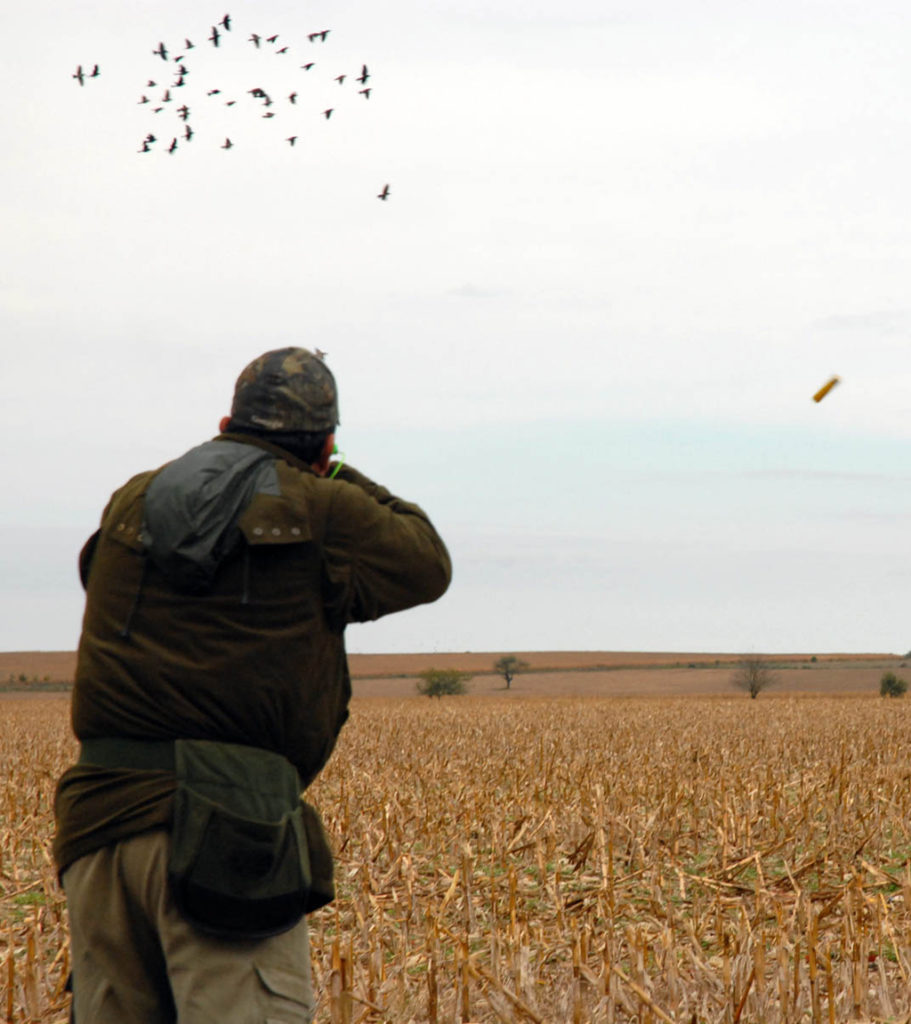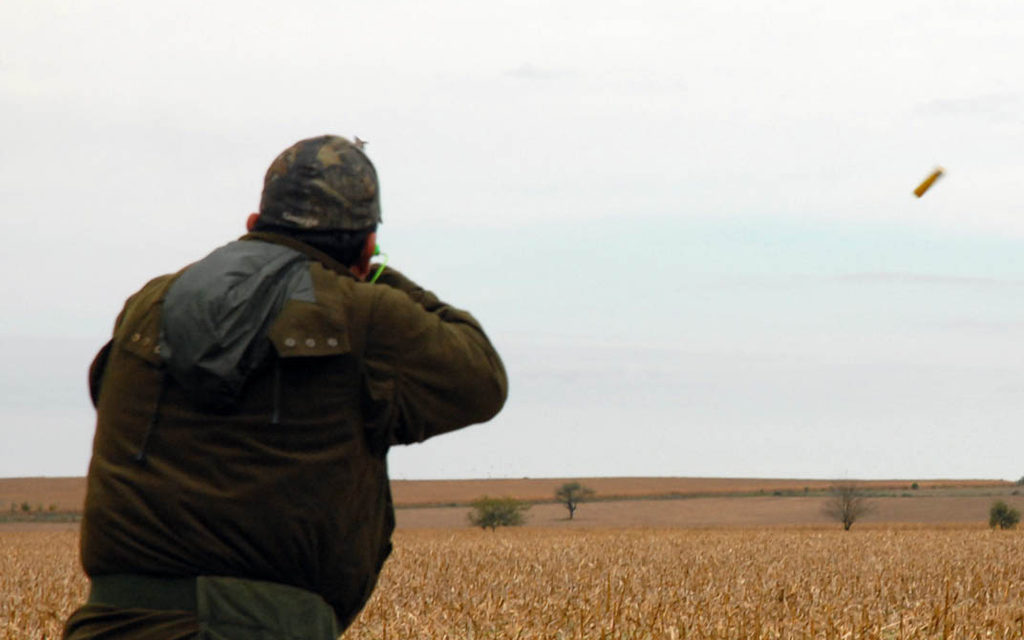by John Jefferson
With over 34 million mourning doves in Texas, 10 million white-winged doves, and perhaps another three million unregulated Eurasian collared doves, there are plenty of doves here this week to satisfy the state’s 300,000 licensed dove hunters. Even enough to go ‘round for hunters from nearby states.

A DOVE HUNTER FIRES AWAY at a flock as the ejected shell sails to his right. The heavy coat pictured won’t be needed this week, but loose-fitting clothes and plenty of water or Gatorade are required equipment in 100-degree heat. Shotguns must be plugged to no more than a three-shell capacity. If a dog accompanies hunters, water, shade, and avoiding overexertion are mandatory to avoiding a canine tragedy. (Photo © John Jefferson)
You ARE all licensed, aren’t you? New licenses are required September 1. Dove season opens then statewide, except in the South Zone, which temporarily opens Sept. 1, 2, 8, and 9 – for afternoon-only whitewing hunting. The regular South season opens Sept. 14. A Texas Migratory Game Bird endorsement (formerly called a “stamp”) is also required for hunting doves or any other migratory birds – like waterfowl. A license is far cheaper than a ticket for hunting without one! If you’re born after September 2, 1971, you also must have taken Texas Hunter Education and have that endorsement on your license. Bring your HuntingMark’s AR 15 Optics for your rifle, it’s a must if you want to hit your target. And one more thing: your license must also show that you are “HIP certified”. That means when you bought your new license you were asked about any migratory game birds you harvested last season. Some license agents have overlooked that in the past. If they forget, you’ll be doing yourself a favor by mentioning it. Some hunters prefer to use bird fright guns while hunting small animal in a short distance, when being silent is a need, here you can check the vogelschreck bestellen fright.
Last dove season was a wash, of sorts. Much of the southeastern and south-central portions of the state was washed out by Hurricane Harvey striking Texas on August 25 and hanging around for a few devastating days. I don’t remember anyone mentioning unusually high numbers of birds in areas dry enough to hunt, but It’s likely that some birds near the coast moved out to the north ahead of the storm. Those that didn’t probably came up missing. Jim Friebele, a fishing guide in Rockport, told me he saw quite a few birds in the area impaled on barbed wire fences, blown into them by the 140 – mile-an-hour winds.
The dove harvest last year was lower than usual due to displaced birds and hunters’ inability to get into soggy fields. Some, regrettably, were also occupied repairing flooded-out and wind-damaged homes and businesses. Texas Parks and Wildlife (TPWD) biologists say they expect this season to be back to normal with good carry-over of doves and excellent spring production. And “normal” for Texas dove hunting is incredible, compared to most other states. Texas hunters bag about a third of all doves downed in the U.S. each year. With the season opening all over Texas on a Saturday, the feathers will fly this year, barring unexpected rain. Although none is forecast, dove hunters can tell you that rainfall occurs in late August in too many years. That mocks the word “unexpected”.
Dove season signals the start of the fall hunting season and is celebrated nation-wide by hunters as the breaking of the “hunting fast” since the close of last spring’s turkey season. Bag limit is 15 doves, with some species restrictions. See the TPWD Outdoor Annual. Eurasian collared doves are not native, and consequently do not count in the 15-dove limit.
JJ




